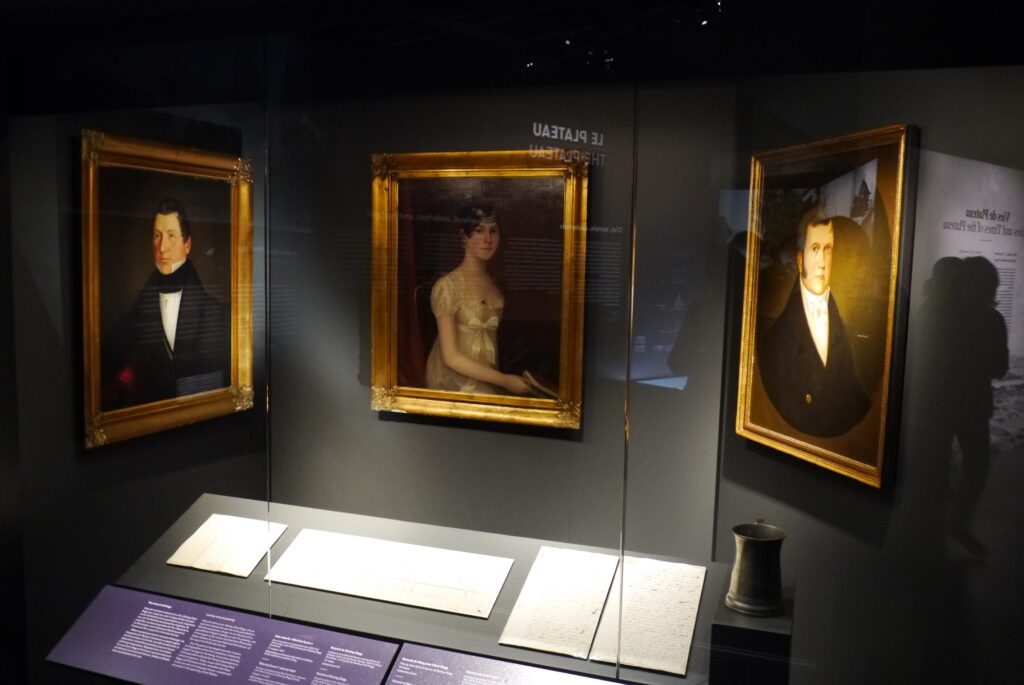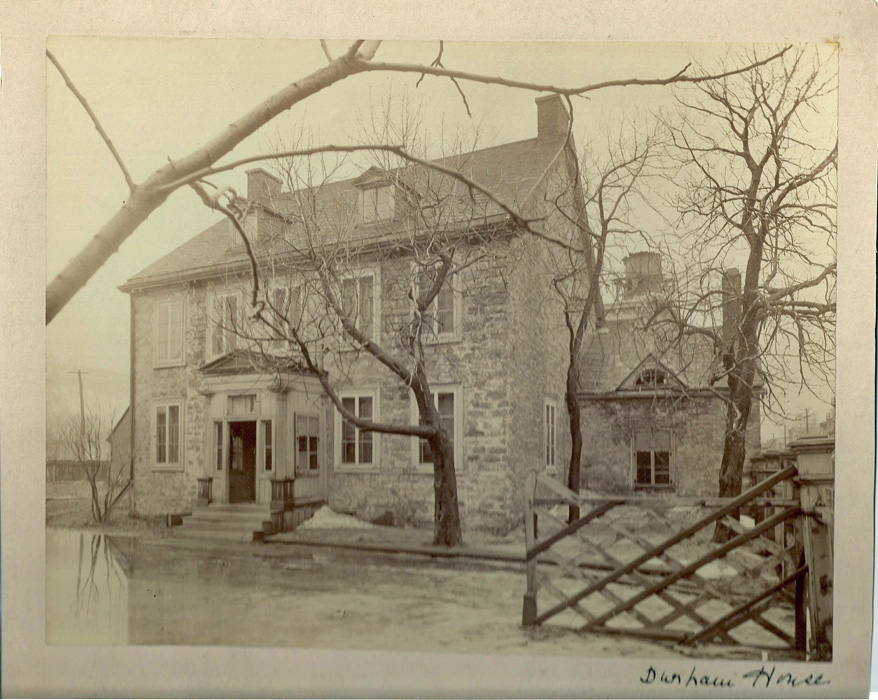We recently attended the opening of a year-long exhibit focusing on Montreal’s Plateau district at the Pointe-à-Callière Montreal Museum of Archaeology and History. We were there because the portraits of several of my ancestors feature in the exhibit. The fact that the museum even knew of the existence of these paintings was mainly a result of good timing.
Some of the genealogists I met at the Quebec Family History Society helped get me started researching my family a few years ago. According to family stories, and to an article in the Dictionary of Canadian Biography (DCB), my great-great grandfather Stanley Clark Bagg was a large landowner in the area that eventually became known as the Plateau. The Plateau is on a geographical plateau, north of Old Montreal and east of Mount Royal.
The DCB article was confusing because it mixed up Stanley Clark Bagg’s mother’s father, who was English, with his father’s father, who was of American origin. What I discovered when I found the relevant leases, land transactions and wills at the Quebec archives was that John Clark, a butcher from Durham, England, bought several adjoining farms along St. Laurent Blvd. in the early 1800s, and his grandson, Stanley Clark Bagg, inherited them.
My husband and I started attending historic walking tours of Saint Laurent Blvd. and the Mile End neighbourhood in the Plateau. We met people who are passionate about history and we began to share information with them. They were able to provide me with the historical and geographical context of my ancestors’ story, and I provided them with my knowledge of the family tree and copies of the documents I had found.
On a snowy afternoon, two weeks before Christmas, 2012, Justin Bur, president of the Mile End Memories local history group, presented a lecture about Stanley Bagg’s lost horse and the origins of Mile End. The room was packed. Someone from Pointe-à-Callière attended and was intrigued. The museum was already aware of the Bagg family because Stanley Bagg had owned a commercial building in Old Montreal. The ruins of that building lie under the museum and are incorporated into an archaeological exhibit.

Eventually, members of my extended family agreed to lend the museum the portraits of John Clark, Stanley Bagg and Mary Ann Clark Bagg. These portraits have never been publicly displayed before, and this is probably the first time they’ve been hung together for at least 70 years. Also on display are several documents from the archives, including the Mile End Tavern lease, mentioned in my last blog post, between John Clark and his future son-in-law, Stanley Bagg.
It is gratifying that John Clark’s role in the history of Mile End is finally being recognized. The DCB now has a page on its website where people can submit corrections, and I am in the process of doing that. Meanwhile, I continue to learn from my new friends in Mile End and share any new discoveries I make with them.
For more information: see http://mile-end.qc.ca/documents/ (in French only) and http://www.pacmusee.qc.ca/en/news/new-exhibition-lives-and-times-of-the-plateau.
If you had ancestors in Quebec, be sure to check out the website of the Quebec Family History Society, www.qfhs.ca for background information on doing research in Quebec and a listing of the society’s extensive library holdings and publications for sale. The members-only section includes exclusive databases and articles. Also take a look at https://genealogyensemble.com, a collaborative blog in which I participate.

